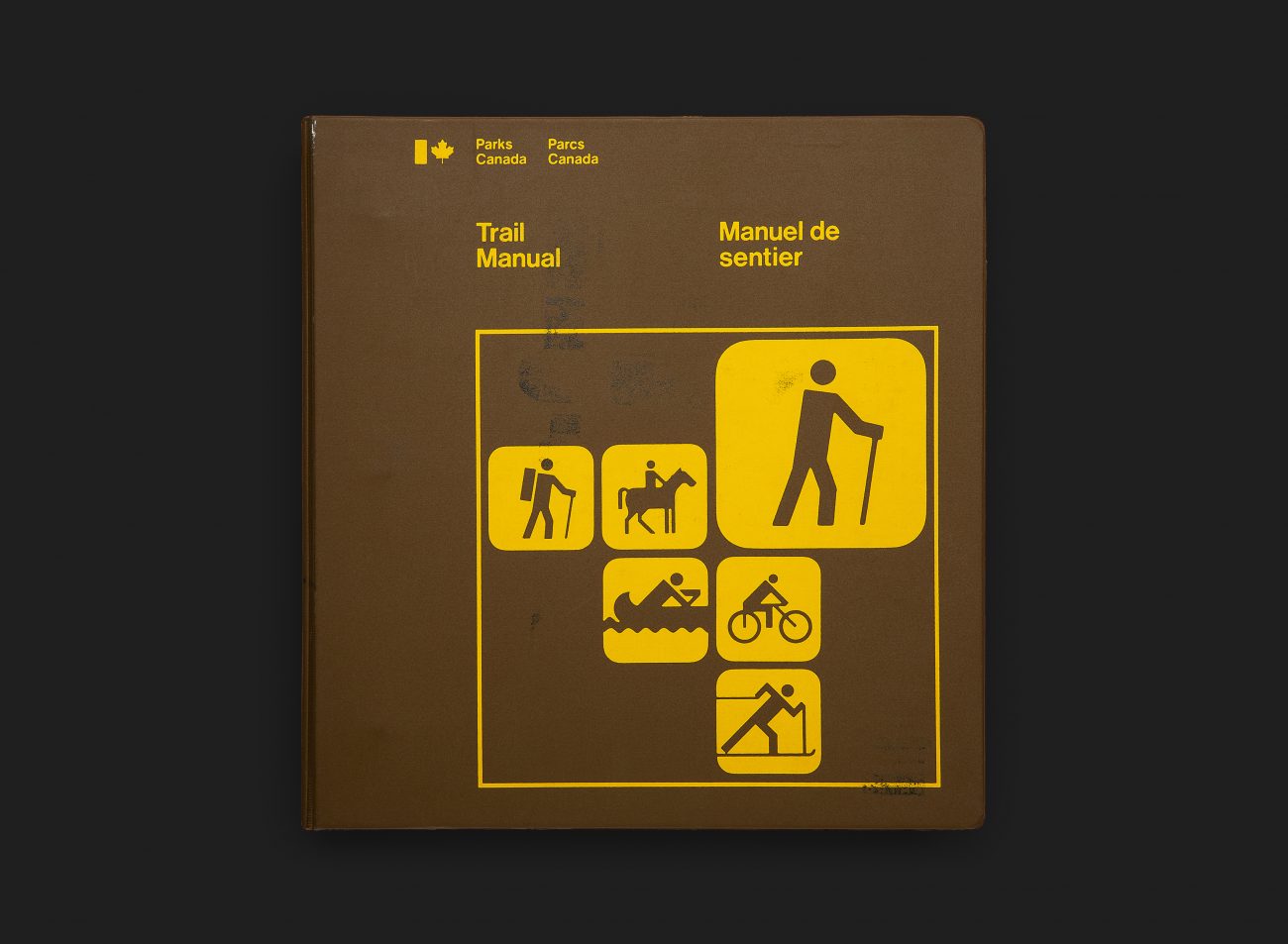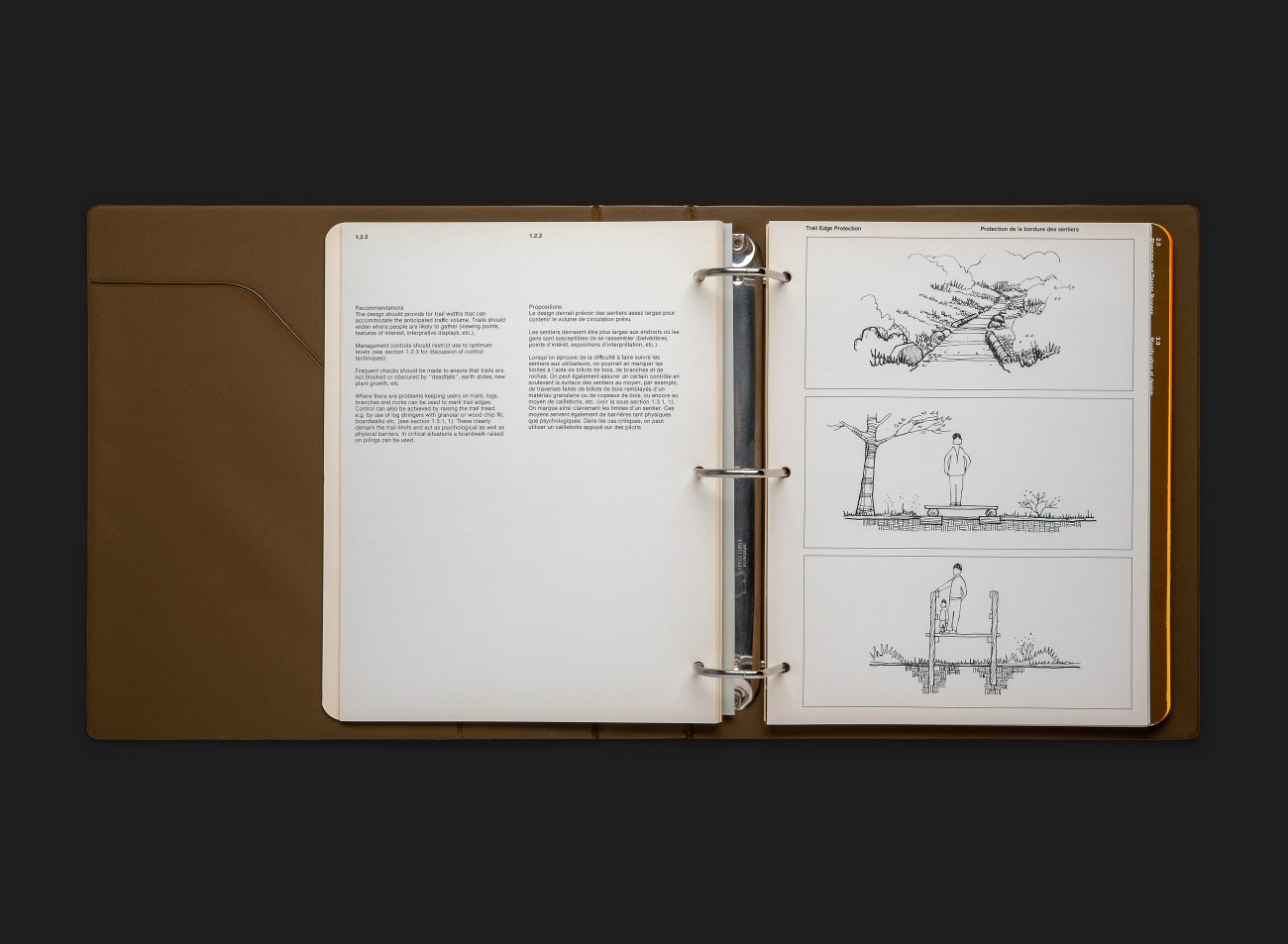Comment
Parks Canada, a federal agency of the Government of Canada, was established on May 19, 1911 under the name ‘Dominion Parks Branch’. It was the world’s first national parks service and was charged with administering a small group of parks and reserve. Today, over a century later, Parks Canada administers 42 national parks and park reserves, 167 national historic sites and 4 national marine conservation areas and marine parks.
This manual was produced in oder to provide guidelines for the development and management of recreational trails for Canada’s National Parks, National Historic Parks and Sites, and those areas concerned with the Agreements for Recreation and Conservation (ARC) program. At the time, there was a huge demand for new recreational trails, as well as impact to existing ones. To cope with the growing demand and to maintain high trail standards it was essential that efficiencies be be made through available resources. The manual’s key objectives were twofold: the satisfaction of user requirements and the protection of the environment.
The manual is in looseleaf form and was designed this way to facilitate further updates of new and supplementary material by its users. The contents are broken in 4 keys chapters: General Planning and Design Guidelines, Planning and Design Process, Construction and Maintenance Guidelines, Guidelines for Particular Trail Types (and also Appendices).
The outer 3 ring binder is covered in brown vinyl and screen printed to the front face only in Parks Canada yellow. The inside pages are primarily printed in black ink, with the exception of some diagrams, maps and illustrations where an additional spot Canada red is used for details. Each of the tabbed chapter dividers is printed in their own background colour to provide colour-coding to the contents. Interestingly the Parks Canada ‘Beaver’ symbol is not present on this manual, instead only the Federal Identity Program system is used to signify the agency. Perhaps as this was an internal, governmental only document, and not at all public facing, this was the rationale for that decision (and possible all materials of this kind).
All Archives






















